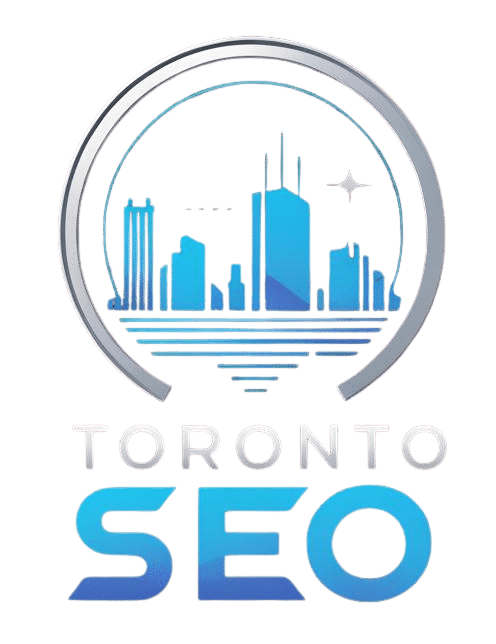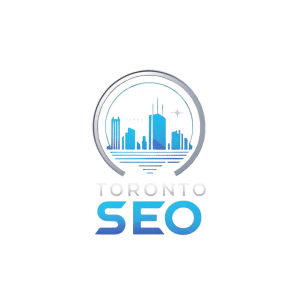Why Every Toronto Business Needs an Advanced SEO Audit in 2025
Toronto’s digital landscape is more competitive than ever. With Google’s AI-driven search algorithms, SGE (Search Generative Experience), and Core Web Vitals updates, performing an in-depth SEO audit is no longer optional — it’s essential. Whether you’re running a local service company or a growing eCommerce brand, this advanced SEO audit checklist for Toronto websites (2025 edition) ensures your site ranks higher, loads faster, and converts better.
A complete SEO audit covers technical health, content performance, local signals, and user experience metrics — all crucial for thriving in this AI-enhanced SEO era.
For deeper insights into current ranking trends, check out Toronto SEO Trends in 2025: What the Latest Data Reveals.
1. Technical SEO Foundation: The Core of Every Toronto SEO Audit
1.1 Site Crawlability and Indexation
Start with ensuring Google can efficiently crawl and index your website. Use Google Search Console to inspect how search engines view your pages.
Check your
robots.txtfile for proper configuration.Ensure your XML sitemap is submitted and updated.
Identify orphan pages and fix internal linking gaps.
For businesses relying on multi-location SEO, having separate optimized pages for each Toronto neighborhood helps Google understand your site hierarchy. Read more in Multi-Location SEO GTA Guide.
1.2 HTTPS and Security Protocols
Security is now a ranking factor. All Toronto businesses must:
Enforce HTTPS across all pages.
Redirect non-secure (HTTP) versions to secure ones.
Use SSL certificates that auto-renew.
You can validate SSL settings using tools like SSL Labs.
1.3 URL Structure Optimization
Keep URLs:
Short and keyword-rich (e.g.,
/seo-audit-toronto/)Hyphenated instead of underscored
Free of tracking parameters whenever possible
A clean URL structure improves both user trust and search engine comprehension.
2. Core Web Vitals: Performance Metrics that Matter in 2025
2.1 LCP (Largest Contentful Paint)
Ensure your website loads the main visual elements (like hero images) in under 2.5 seconds.
Optimize server response times.
Use a CDN (Content Delivery Network).
Compress large images and videos.
2.2 FID → INP (Interaction to Next Paint)
Google replaced First Input Delay (FID) with Interaction to Next Paint (INP) as of 2025.
Your website should respond to all user interactions (like button clicks) within 200 milliseconds.
Optimize JS scripts.
Defer non-essential resources.
Use modern frameworks or lazy-loading.
Read our insights on Core Web Vitals Toronto for detailed optimization strategies.
2.3 CLS (Cumulative Layout Shift)
Stabilize your layout by:
Setting width and height attributes on images.
Avoiding late-loading banners and pop-ups.
Using CSS aspect-ratio boxes.
3. On-Page SEO: Content That Drives Toronto Traffic
3.1 Title Tags and Meta Descriptions
Each page must have a unique, keyword-optimized title under 60 characters.
Include “Toronto” or specific neighborhoods like “Etobicoke,” “North York,” or “Scarborough” when relevant.
Meta descriptions should entice clicks while summarizing page content — think of them as mini-advertisements.
3.2 Header Hierarchy
Use proper header tags (H1–H4). Your H1 should target the primary keyword, e.g.,
“Advanced SEO Audit Checklist for Toronto Websites (2025 Edition)”
Subheadings should incorporate secondary keywords like “technical SEO Toronto” or “SEO checklist for local businesses.”
3.3 Keyword Placement and Semantic Relevance
Integrate LSI keywords naturally. Google’s semantic search rewards context-rich writing. Tools like SurferSEO or MarketMuse can analyze content gaps.
To understand how Toronto agencies use AI for optimization, explore AI Content Optimization: Smarter Blog Writing for Toronto Companies.

4. Content Quality: From E-E-A-T to AI-Enhanced Authority
4.1 Expertise, Experience, Authoritativeness, and Trust (E-E-A-T)
Google’s latest updates emphasize human credibility.
To build trust signals:
Display author bios with credentials.
Link to credible external sources (e.g., Government of Canada Business Resources).
Include schema markup for articles and reviews.
Learn how Toronto brands are applying this in E-E-A-T for SMBs: Trust Signals that Win Rankings.
4.2 Content Depth and Internal Linking
Audit for thin content and expand posts with data, FAQs, and visuals.
Each page should have at least 3 internal links and 2 outbound links to relevant, authoritative sources.
Example internal links:
4.3 Content Freshness
Google prioritizes updated information. Review your top-performing content quarterly. Add recent Toronto data, new AI SEO insights, or market trends.
5. Local SEO Audit: Ranking in Toronto’s 3-Pack
5.1 Google Business Profile (GBP) Optimization
Ensure your Google Business Profile (GBP) is complete and verified:
Accurate NAP (Name, Address, Phone)
Updated hours and photos
Regular Q&A and post updates
Visit Google Business Profile Toronto Guide for full optimization strategies.
5.2 Local Citations and Directory Listings
Toronto SEO still relies on accurate NAP citations.
Audit listings on Yelp, YellowPages, and local directories.
Remove duplicates and outdated information.
Check out Citation Cleanup Toronto: GTA Directory List for a full breakdown.
5.3 Local Reviews and Reputation Signals
Online reviews are powerful ranking and trust indicators.
Encourage clients to leave Google reviews and reply promptly.
Consider embedding review schema on service pages.
5.4 Proximity and Local Keywords
Include neighborhood-based keywords like “SEO agency in Downtown Toronto” or “North York website optimization.”
Google rewards geographic relevance.
6. Technical Backlink & Authority Audit
6.1 Link Profile Evaluation
Use tools like Ahrefs or SEMrush to assess:
Referring domains
Anchor text distribution
Toxic links requiring disavow
High-quality backlinks remain one of the top ranking factors. Learn how agencies do it in How Toronto SEO Agencies Build High-Authority Backlinks Without Guest Posting.
6.2 Internal Link Sculpting
Link high-authority pages (like your homepage or pillar posts) to underperforming ones to distribute link equity efficiently.
Anchor text should be natural but keyword-aligned.
7. Schema Markup & Structured Data
Implement schema for:
LocalBusiness
FAQPage
Product
Review
Article
Structured data helps Google understand your content and improves rich result visibility.
Use Google’s Structured Data Testing Tool to validate your schema.
8. Analytics, Reporting, and Continuous Optimization
8.1 Google Analytics 4 (GA4) Setup
Set up custom events for:
Button clicks
Form submissions
Scroll depth
Page engagement
Analyze traffic sources to see which keywords bring Toronto leads.
8.2 Search Console Insights
Monitor for:
Indexing errors
Mobile usability issues
Core Web Vitals performance
8.3 Conversion Tracking
Tie SEO metrics to business outcomes — leads, calls, and revenue. This turns SEO from a cost center into a growth engine.
For a complete guide, visit How to Track SEO Performance with Analytics.
9. AI and Machine Learning in 2025 SEO Audits
9.1 Predictive SEO and AI Forecasting
Modern SEO audits should include AI traffic forecasting to predict which keywords will grow.
Toronto SEO firms use machine learning to cluster intent-based keywords and forecast ROI.
Check Predictive SEO and AI Traffic Forecasting to understand this strategy.
9.2 AI-Enhanced Content Analysis
AI tools can detect outdated or duplicate content.
Leverage ChatGPT or similar AI systems to rewrite old pages and expand missing topical depth.
9.3 Smart Backlinking with AI Detection
Avoid spam networks by using AI tools that detect toxic backlinks.
Toronto agencies are leading the charge — see Smarter Backlinking: AI Detecting Spam in Toronto.
10. Final SEO Audit Review and Implementation Plan
After completing the audit:
Prioritize fixes by impact and difficulty.
Assign technical tasks to developers and content improvements to copywriters.
Re-test every major fix using Google Search Console and Lighthouse.
Benchmark KPIs monthly to measure ongoing gains.
A full SEO audit is not a one-time activity — it’s an evolving system that keeps your Toronto website aligned with Google’s algorithms and local trends.
For professional SEO assistance, you can always contact Toronto SEO for a detailed site audit and growth plan tailored to your industry.
Frequently Asked Questions (FAQs)
1. How often should I perform an SEO audit for my Toronto website?
At least every six months, or immediately after major Google algorithm updates.
2. What’s the difference between a technical SEO audit and a full SEO audit?
A technical audit focuses on crawlability, speed, and structure, while a full audit includes content, backlinks, and local SEO elements.
3. Can AI tools perform SEO audits automatically?
AI tools can speed up audits but should complement human expertise for accuracy and context.
4. Do small Toronto businesses need full audits?
Yes. Even small businesses benefit from detecting site errors, optimizing local SEO, and improving rankings on Google Maps.
5. How long does an SEO audit take?
A standard audit takes 1–2 weeks, while a deep enterprise-level audit can extend up to a month.
Conclusion
By implementing this Advanced SEO Audit Checklist for Toronto Websites (2025 Edition), you’ll not only fix critical issues but also future-proof your digital presence. SEO is no longer about keywords alone — it’s about technical excellence, AI adaptation, and local authority.
Toronto businesses that audit regularly and align with Google’s evolving AI-driven standards will dominate search in 2025 and beyond.


